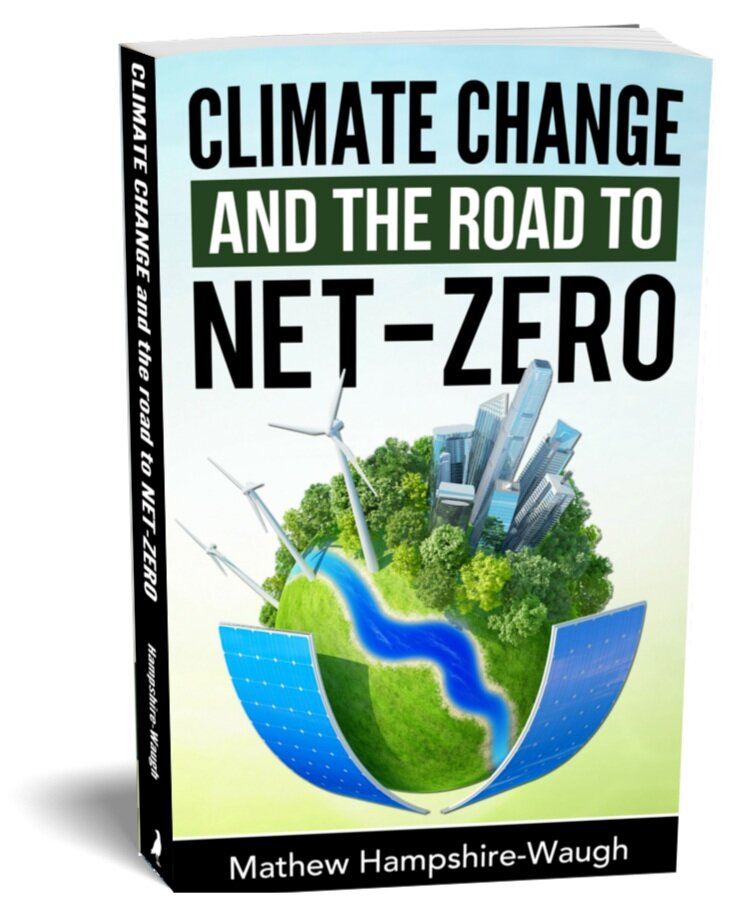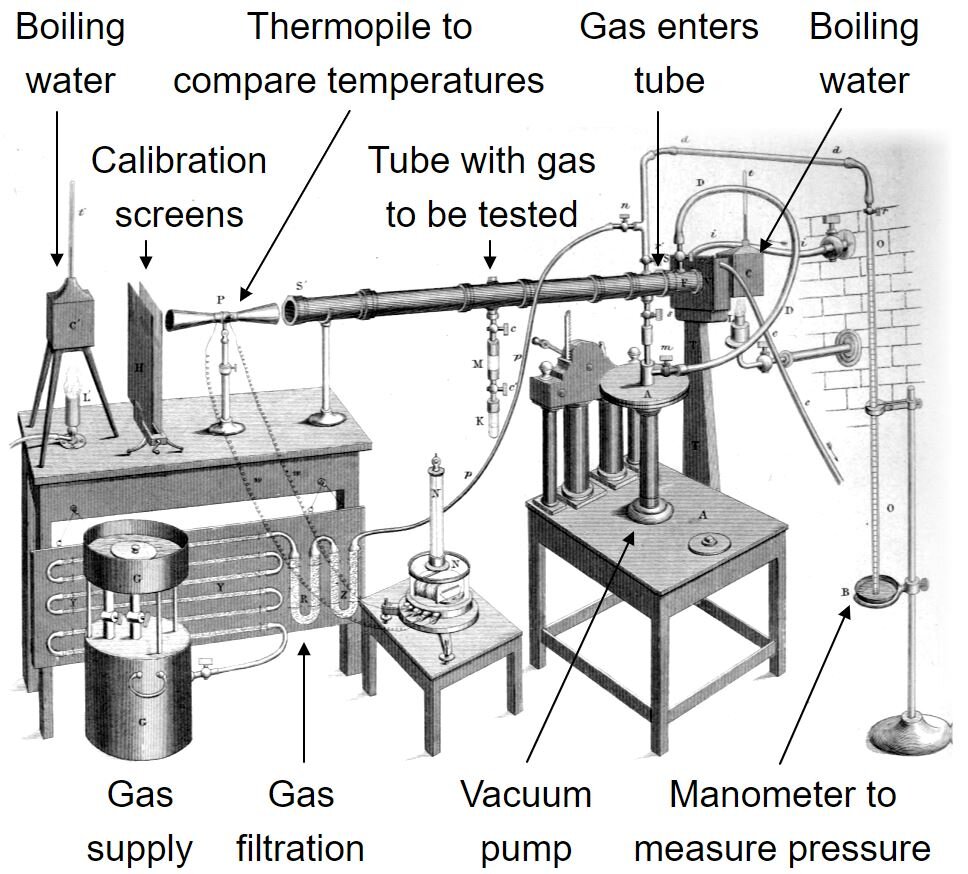Climate Engineering & Negative Emissions Technology
In this post from NET-ZERO:
What is Climate Engineering? The different strategies proposed to slow or halt global warming by direct intervention.
How does Negative Emissions Technology work? Tree Planting, Rock Weathering, Ocean Nutrition, Direct Air Capture, and Biomass with Carbon Capture - the pros and cons of sucking CO2 from the air.
Could Negative Emissions Technology solve climate change? Why Negative Emissions Technology is useful for slowing Global Warming and offsetting hard-to-abate emissions, but will likely be limited to 10-30% of the solution.
Climate engineering refers to several proposed strategies which are designed to either slow, or prevent, climate change by either directly removing CO2 from the atmosphere (negative emissions technology) or by limiting the amount of solar energy absorbed by the planet (solar radiation management). In this post we are going to dig into the main options for Negative Emissions Technology.
Sucking CO2 from the Atmosphere
Negative Emissions Technology (NET) is designed to draw CO2 back out of the atmosphere in order to reduce radiative forcing (the net-energy inflows into Earth caused by the increases to greenhouse gasses in the atmosphere), and to keep temperature rises at bay.
Here are the techniques which have been proposed to suck CO2 from the air.
Reducing Deforestation, Reforestation or Afforestation requires stopping the destruction of forests, restoring past forests, or growing new ones and speeding up the land based biological carbon cycle. Trees absorb carbon dioxide using photosynthesis through the day and expel just half as much CO2 through respiration overnight when growing. The average tree draws half a tonne of CO2 from the atmosphere as it grows over 25-75 years and locks it away in the trunk, branches, and root systems. There are already 3 trillion trees on Earth covering 42 million square km or 28% of all dry land.
Reducing Deforestation: Every year the world loses around 80,000 square km of forest from unsustainable logging and clearing for agricultural land. That’s a land area the size of Austria and, with 50,000 tonnes of CO2 bound up in each square kilometre of forest, this releases four billion tonnes of CO2 emissions from the burning and rotting wood. End deforestation and you eliminate nearly 10% of all CO2e emissions. The cost is estimated at less than $5 per tonne of CO2 to compensate farmers for lost income on potential agricultural land and to ensure the policy is enforced.
Tree Planting: Scientists estimate there is enough space on the planet to add up to another nine million square kilometres of forest or 0.7 trillion trees without impacting agricultural output.15 This is an area bigger than the United States. This could remove more than 400 billion tonnes of CO2 over the next 50-100 years at a rate of up to 7-8 billion tonnes per year. It costs between $0.5 and $6 to plant and establish one tree depending on the land,16 a total cost of about $2 trillion to plant all potential land.vi Reforestation could work out at less than $10 per tonne of CO2 removed or an added cost of $0.5c per kWh to offset the emissions from fossil fuel energy.
Since the 1990s, China has planted nearly one million square kilometres of new forest, covering 0.7% of all the world’s dryland at a cost of over $100 billion ($3 per tree). Scaling this up to every country in the world, full forest potential could be reached over the coming decades. Tree planting is relatively cheap, effective, and low risk. It also comes with added co-benefits of soil preservation, flood control, and water retention. But it only covers a maximum of 15% of current annual emissions and eventually this strategy runs out of land unless the wood can be sustainably harvested and stored or used. Planting trees is effective, cheap, and low risk, but it can only offset a fraction of emissions.
Enhanced Weathering is a route to speed up the slow carbon cycle. Rock will absorb CO2 from the atmosphere and transport it to the bottom of the ocean. The problem is the process takes thousands of years. Enhanced weathering involves crushing silicate rock such as basalt and spreading the rock powder onto farmers’ fields, deserts, or shallow coastal areas to speed up the weathering process.
Studies conducted by Thorben Amann from the University of Hamburg show that the rate of weathering is between 5-50 tonnes of CO2 per square km per year. Warm and wet areas are best suited for enhanced weathering, so the Continental Shelf (28 million square km), and about half of global agricultural land (19 million square km) are suitable for this purpose. Spread rock over these areas and we could remove 1-2 billion tonnes of CO2 per year, though again, unfortunately, that’s just 5% of emissions.
Every tonne of CO2 sequestered in these ways, requires 3 tonnes of basalt rock. With an average price of $10 per tonne of crushed rock, this brings the cost of advanced weathering to over $30 per tonne of CO2 or $2c per kWh to offset fossil fuel combustion. Enhanced weathering is low risk but can only offset a fraction of emissions at best and is three times more expensive than tree planting.
Ocean Nutrition is a proposed strategy to accelerate the rate at which algae in the ocean sequester carbon dioxide from the atmosphere by speeding up the ocean biological pump. Algae already absorb 36 billion tonnes of CO2 by photosynthesis every year. Some scientists believe that artificially adding fertiliser such as iron, phosphate, or nitrogen to the ocean will encourage more algae growth, draw down more CO2, and deposit the carbon on the ocean floor to be locked away for thousands of years.
There are enough fertiliser resources on the planet to sequester thousands of billions of tonnes of carbon dioxide, however, much of the CO2 will return to the atmosphere before it can be locked away in ocean sediment.
Providing all the required nutrients for algae growth would cost over $100 per tonne CO2, so realistically ocean nutrition would target areas which are just lacking key nutrients. Best cost estimates by the Ocean Nourishment Corporation which is trialling this approach are around $20 per tonne of CO2.
In 2012, US self-proclaimed environmental entrepreneur Russ George convinced a local village in west Canada to support his scheme to dump iron powder into their waters to boost salmon production and to try and sell carbon credits. His start-up, Planktos, dumped 100 tonnes of iron sulphate into the ocean before returning to shore where he was arrested and accused of breaking international law by illegal dumping. George maintains that the record salmon harvest in the following year was down to his intervention and that if his data had not been confiscated by the authorities, he would have proven the carbon reduction potential of his ocean nourishment scheme.
More rigorous scientific experiments using iron fertilisation have typically resulted in large algae blooms which grew so quickly that they depleted the surrounding waters of oxygen, destroying aquatic life, killing themselves, and releasing all the carbon back into the atmosphere.
Overall, ocean nutrition is more expensive than reforestation but does offer a significantly greater carbon capture potential. However, the complexity of ocean systems and ocean chemistry mean this option on a large scale could also come with significant unintended consequences.
Direct Air Carbon Capture (DAC) and Storage involves deploying technology to filter CO2 straight out of the air using large fans and chemical reactions – much like an artificial tree. The CO2 can either be stored deep underground or turned into other products. The biggest hurdle for direct air capture is the second law of thermodynamics which governs a process referred to as entropy that rests on the recognition that everything in the universe naturally moves towards a state of disorder or randomness and requires energy to reverse and reorder the process. Separating CO2 from a disorderly mix of other gases in the air requires reordering and the lower the concentration the more energy is required.
As Bill Gates puts it, “Pick one molecule at random out of the atmosphere and the odds that it will be carbon dioxide are just 1 in 2,500”.
The physics of filtration mean that at theoretical maximum efficiency, with cheap wholesale electricity, Direct Air Capture running costs would stack up to around $4 per tonne of CO2 removed. Unfortunately, real systems can only achieve 5-40% efficiency, so the real running cost is multiple times higher, plus the equipment, storage, and labour costs must also be included.
A company called Carbon Engineering is one of Bill Gates’s many climate change projects. This Canadian company is operating direct air capture pilot plants at the tonne scale today but believe they can scale up the facilities to capture one million tonnes of CO2 per year.
Based on Carbon Engineering’s scaled up costs, carbon capture and storage would end up at over $120 per tonne or $10c per kWh equivalent offset. Bill Gates expects with some innovation “we can realistically expect it [DAC] to get down to $100 per ton”. Let’s say we go one step further and assume the efficiency can reach 40% and the build costs can be cut in half, this would bring the total buying and running cost down to $70 per tonne of CO2 or $5c per kWh fossil fuel carbon offset.
A company called Global Thermostat believe they can get the process down to $50 per tonne of CO2 once fully scaled up, yet DAC would still prove one of the most expensive negative emissions options. Direct air capture is a very flexible solution, but the physics of the process may ultimately limit the economics and the scale at which this technology can be deployed.
Biomass with Carbon Capture and Storage (BECCS) involves growing biomass like trees or crops as fuel to provide heat or electricity, whilst capturing the CO2 emissions from the process. The CO2 is then stored underground. The net result makes possible a continual CO2 drawdown from the atmosphere, whilst providing a source of energy. The technology already exists and there are a number of such plants operating around the world.
Unfortunately, the extra energy and equipment to capture and store the CO2 adds around $40 per tonne CO2 or $2-3c per kWh to already expensive biomass electricity, creating a cost that is a significant hurdle to widespread adoption.
Other issues include competition for land, CO2 which escapes capture (>20%), and difficulties or risks around building out sufficient storage infrastructure. Assuming we could pump CO2 back into the ground as fast as we can extract liquefied oil and gas, then 31 million cubic metres of CO2 could be injected per day (25 Wembley stadiums) – up to a maximum of 7 billion tonnes CO2 per year or 14% of today’s annual emissions.
Negative Emissions Technologies (NETs) - Useful But Only a Fraction of the Solution
Negative Emissions Technologies range from low risk, low cost, but limited scale options like tree planting, to potentially large scale but high cost and uncertain options like direct air capture or ocean nutrition. Negative emissions strategies will certainly play a role in our response to climate change, but the mix of options and scale of deployment are still to be decided.
Given the trade-offs between scale and cost for Negative Emissions Technologies, we should seek to abate global emissions as far as possible in the first place, so that the limited quantity or expensive offsetting can be used to cover the hard-to-abate areas of the economy.


































